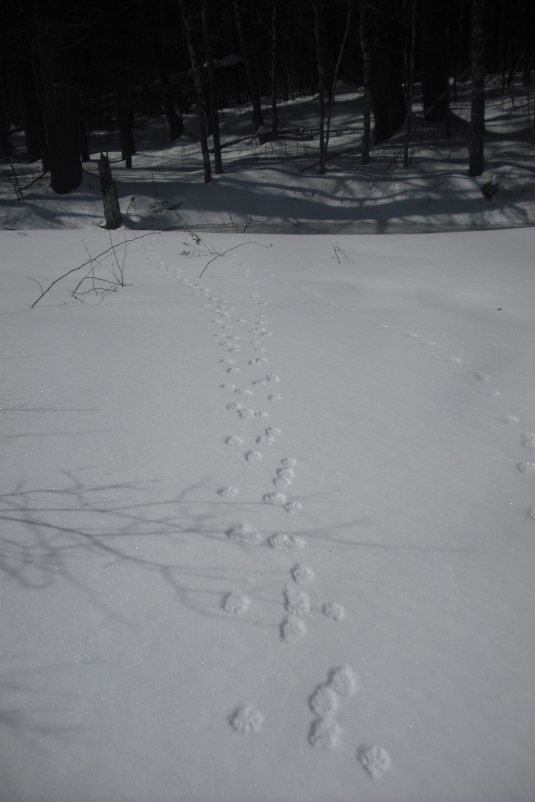The following was written for a library program where the participants were ranging in age from babies to 4th grade. I wanted to present it here with some pictures I’ve taken over the years. Enjoy, and pass it on to kids you know… Perhaps they will take the time to read some morning stories of the night before!
How can you tell what was stirring in the night, while you were fast asleep in your bed? Most of you have never stayed up past nightfall outside, and even if you did, in the dark how would you see what was happening? Night creatures have special adaptations to help them get around in the dark, to find food, avoid predators, and keep track of their families. Most animals and insects see better in the night than we do. Bats don’t use their eyes to get around – they use their ears.
But in the morning when you get out of bed and put on your clothes and shoes to talk an early walk, you can find signs of what happened out there last night. In the dew you might find a darker line, where a larger animal like a deer or a moose walked through the grass and rubbed against foliage, knocking the silvery dew off and leaving a trace of their passage. In a muddy place, near a pond or brook, you may find the tracks of nocturnal prowlers. Once you learn to identify the tracks, you will be able to read interesting stories in mud and snow written by animals hunting and playing.
In the dewy grass of your yard, or a field, you will find the silvery webs of spiders, spun nightly by the industrious arthropods. Spiders don’t all spin webs, but those who do have many different designs they make to capture their prey and provide shelter for themselves. Spiders are helpful creatures, keeping the insect populations down so you can play outside without too many biting pests, and grow plants in your garden. Spiders don’t bite until they feel threatened, so watch with your eyes, but don’t touch.
One animal you won’t find traces of is the bat… Bats don’t walk on land, they soar through the pitch black night, using high-pitched noises to locate prey and avoid obstacles. Bats eat their weight in insects every night, helping keep the mosquito population down. Their echolocation enables them to bounce noise off an object, then interpret the echo, being able to identify shapes and decide what they want to eat, and what to fly around.







